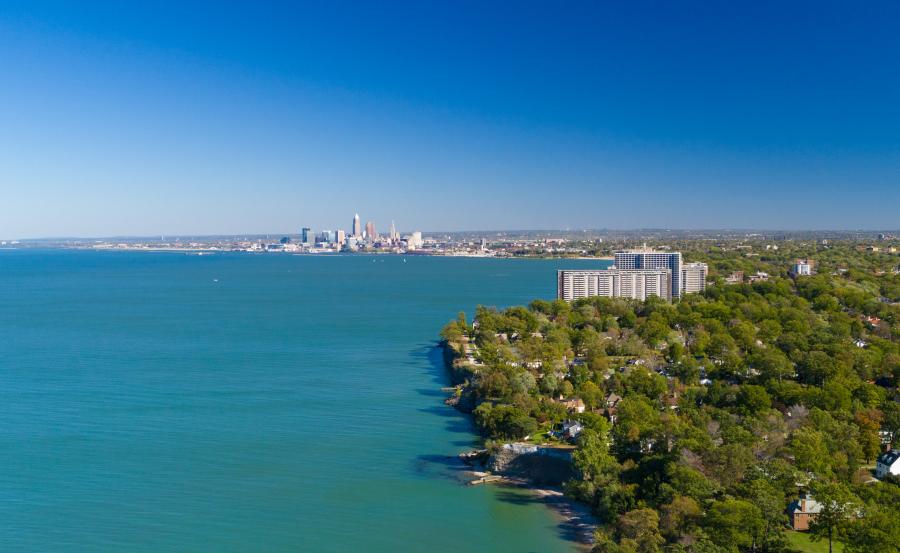Protect Lake Erie by Protecting its Watershed

The first step in providing safe, affordable drinking water is keeping Lake Erie clean and healthy. Our 1.4 million customers are part of the more than 11 million people in the U.S. and Canada who rely on Lake Erie as their source of drinking water.
Our treatment process produces safe drinking water every day, but it’s easier and less costly if we’re starting with a clean and healthy source. That’s why being an environmental steward of Lake Erie is part of our mission.
The health of Lake Erie is directly affected by its watershed, which is comprised of the rivers and tributaries that drain water from the surrounding land into the lake. The Lake Erie Watershed drains 30,140 square miles of Ohio, Indiana, Michigan, New York, Pennsylvania, and the Canadian province of Ontario, as well as the upstream Great Lakes.
All rainfall, snowmelt, and water runoff in the Lake Erie Watershed – and any pollutant carried with it – travels into storm drains and waterways like the Cuyahoga River, Doan Brook, or Euclid Creek, and eventually ends up in the lake. These pollutants ultimately affect Lake Erie’s water quality and ecosystem.
Our everyday actions at home, school, or work affect the quality of our source water and the health of its watershed. There are simple actions we can all take to help protect our local waterways and Lake Erie.
- Reduce your use of disposable, single-use plastics by replacing items like grocery bags, water bottles, and to-go utensils with reusable options.
- Install a rain barrel to collect and reuse water runoff from your house, which can reduce your water bill and help minimize stormwater runoff.
- Pick up litter and debris in your yard and community, including pet waste. By doing so, not only are you keeping your neighborhood beautiful, you’re also keeping trash out of local waterways and Lake Erie.
- Limit the use of pesticides and fertilizers and always follow the label directions. Get a soil test or check your soil type to determine what types of nutrients, if any, your soil needs before applying fertilizer to your lawn or garden.
- Properly use and dispose of hazardous household chemicals and medications. Don't pour hazardous waste down the drain, on the ground, or into storm sewers. Follow local guidelines for trash and recycling and look for hazardous waste drop-off or collection events for safe disposal.
- Landscape with native plants and trees. Native plants are good for local wildlife and are easier and less costly to maintain since they are adapted to the Ohio climate.
- Plant trees, grass, or shrubs to prevent soil erosion and reduce impermeable surfaces. This reduces stormwater runoff and stress on sewer infrastructure.
- Get involved with local watershed groups and other organizations dedicated to protecting the environment. Promote the enhancement and restoration of streams and wetlands in your community.
